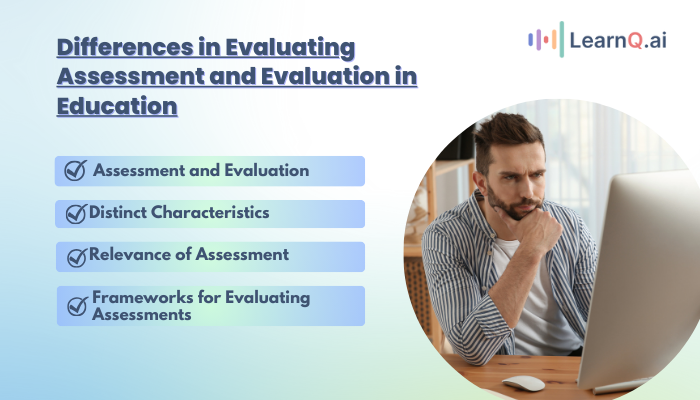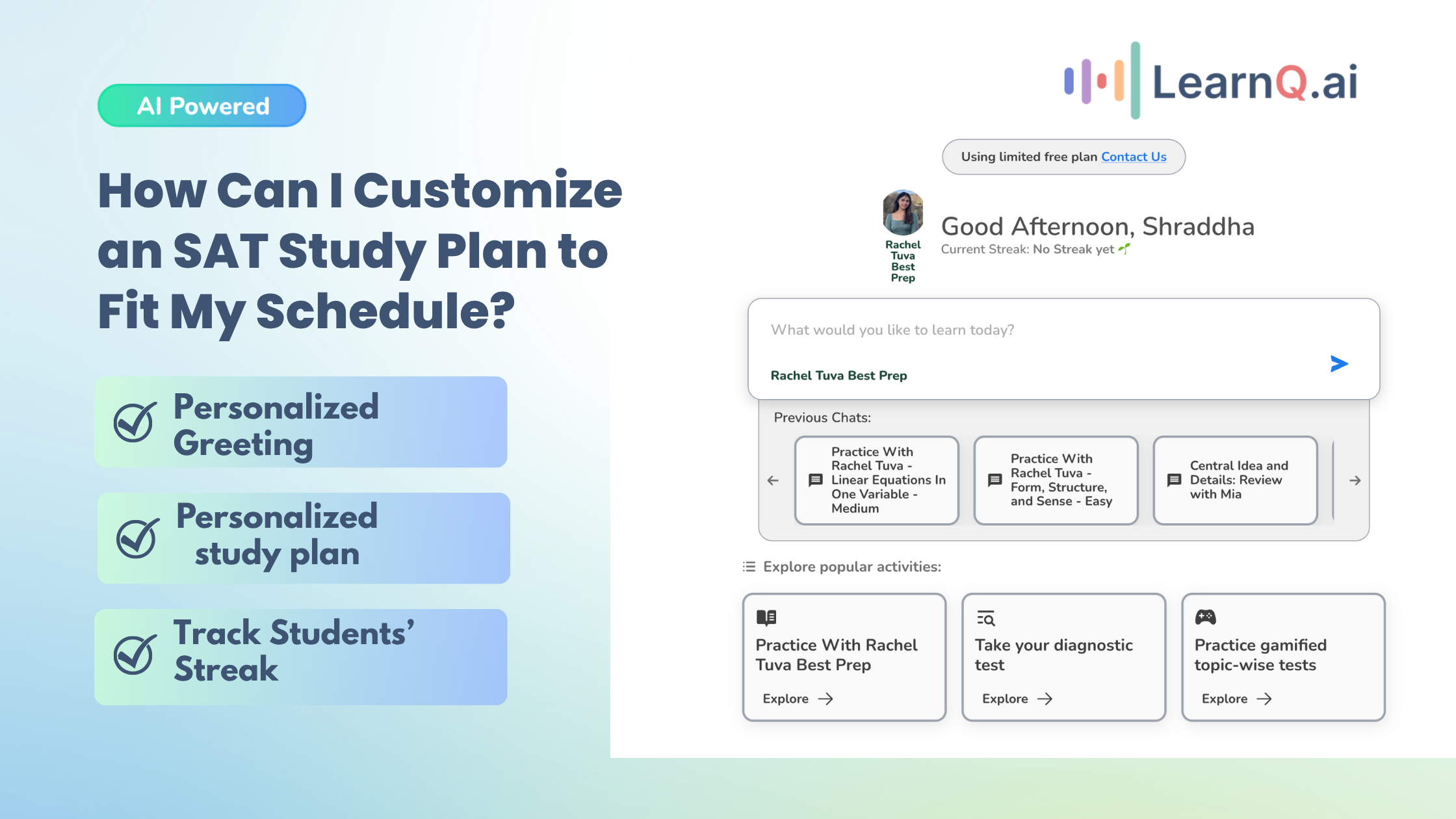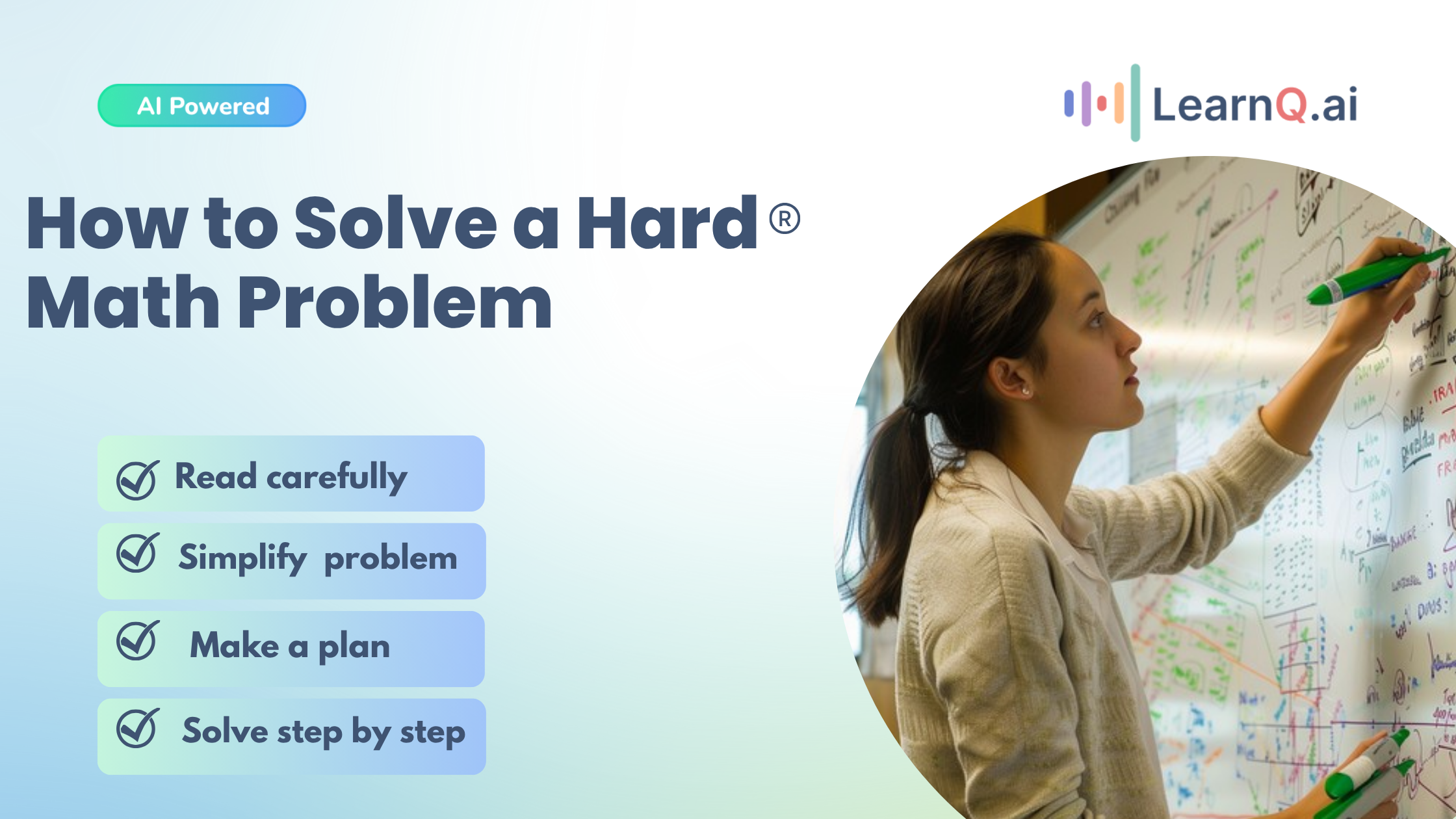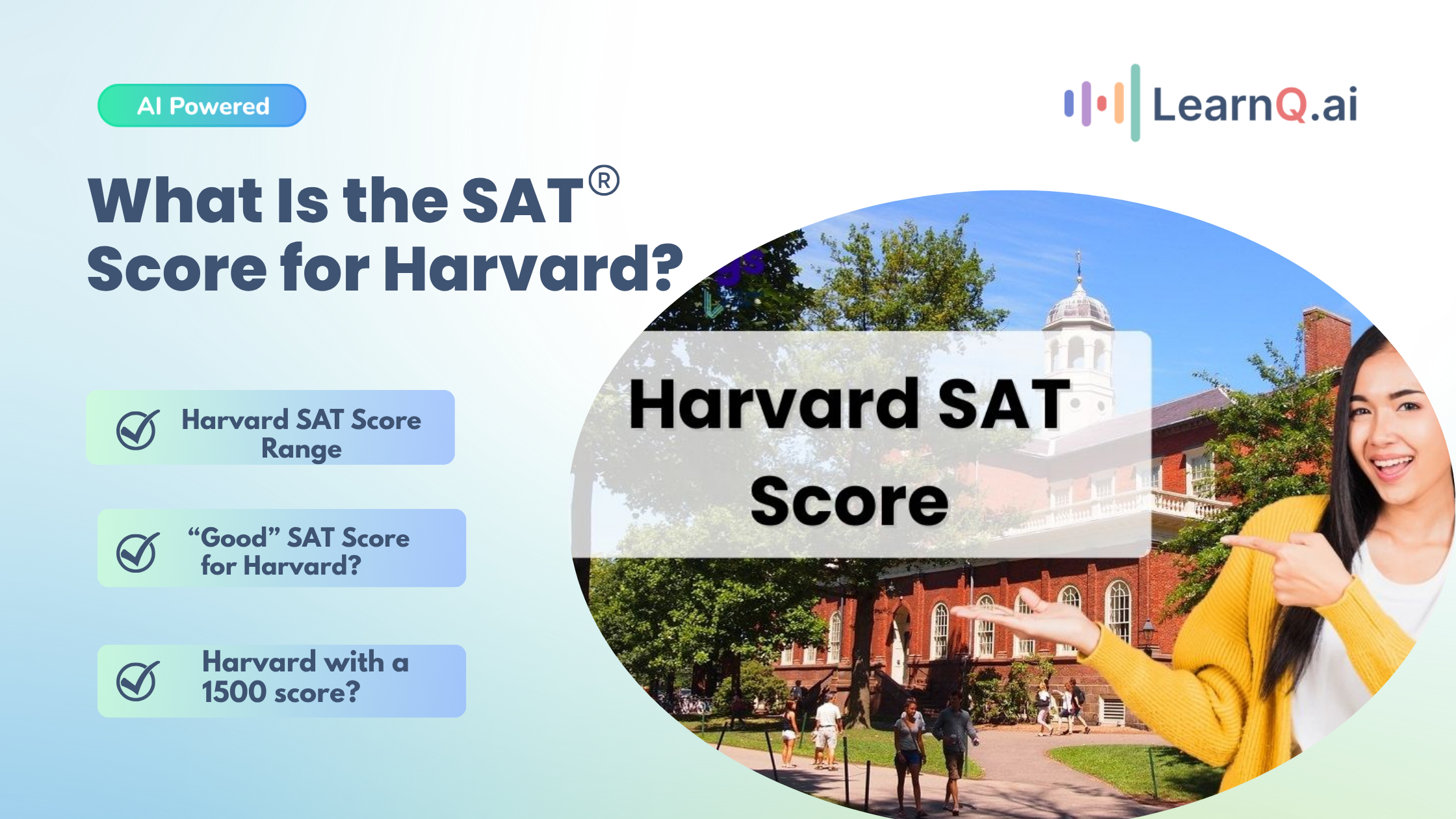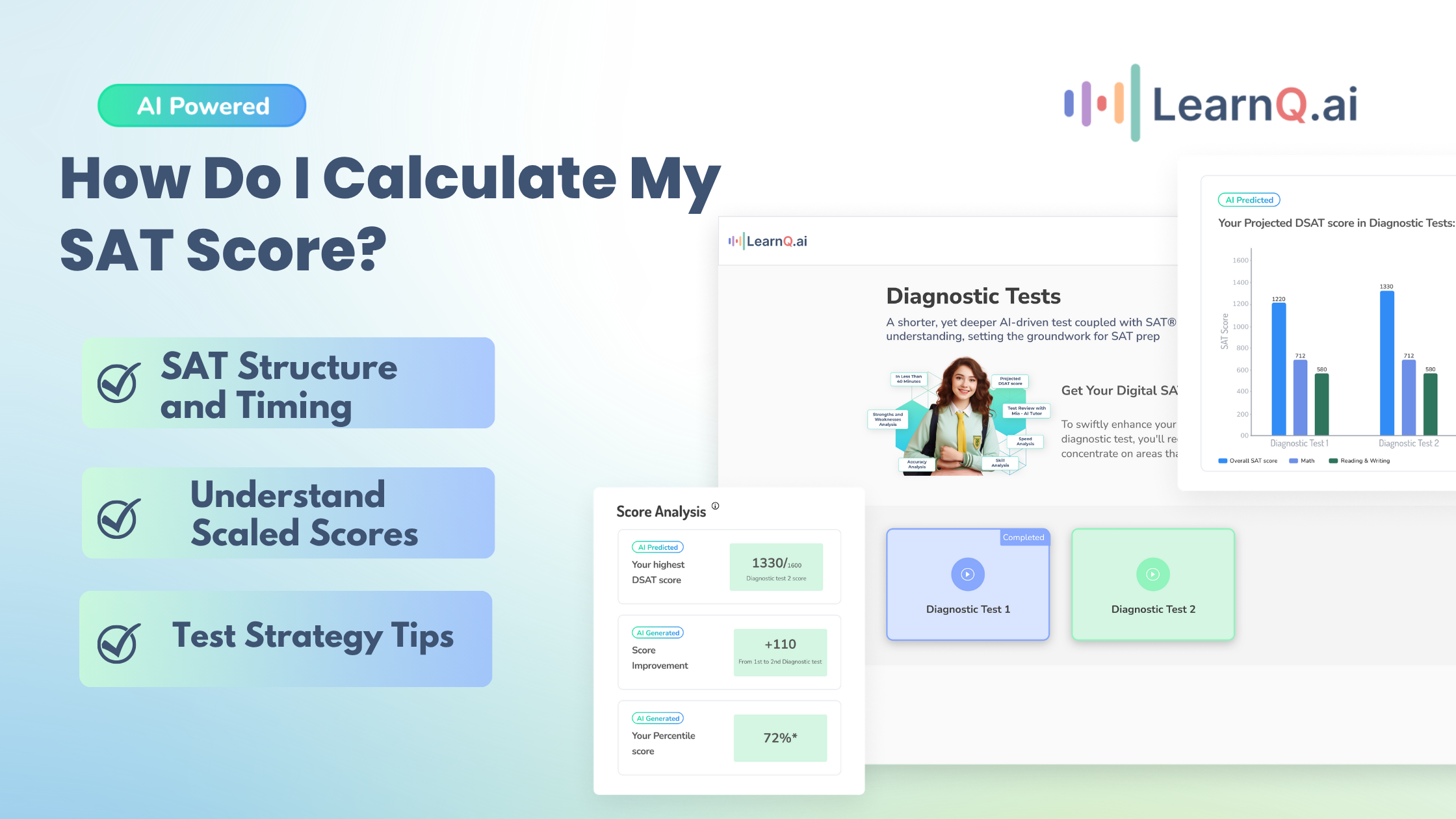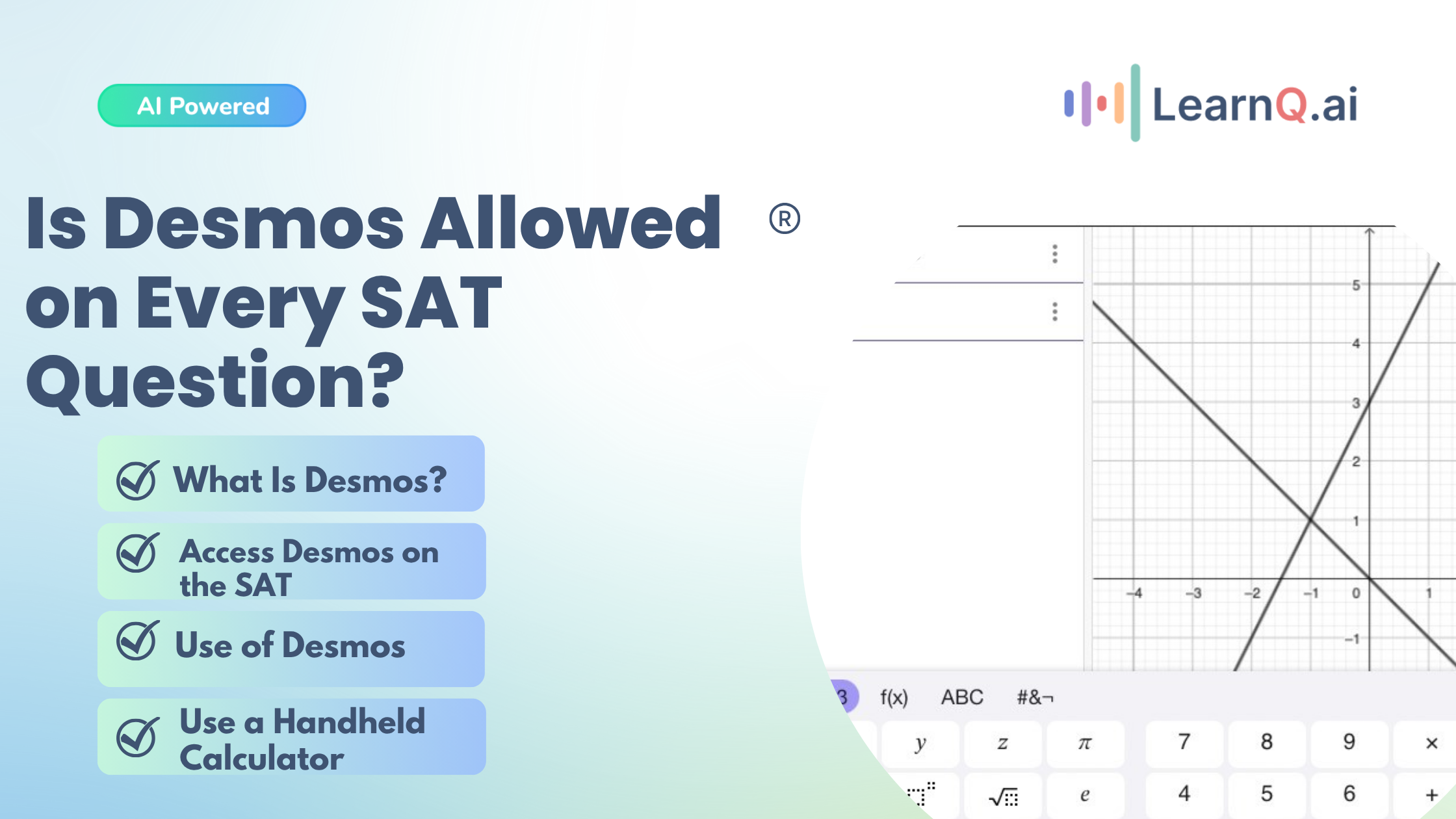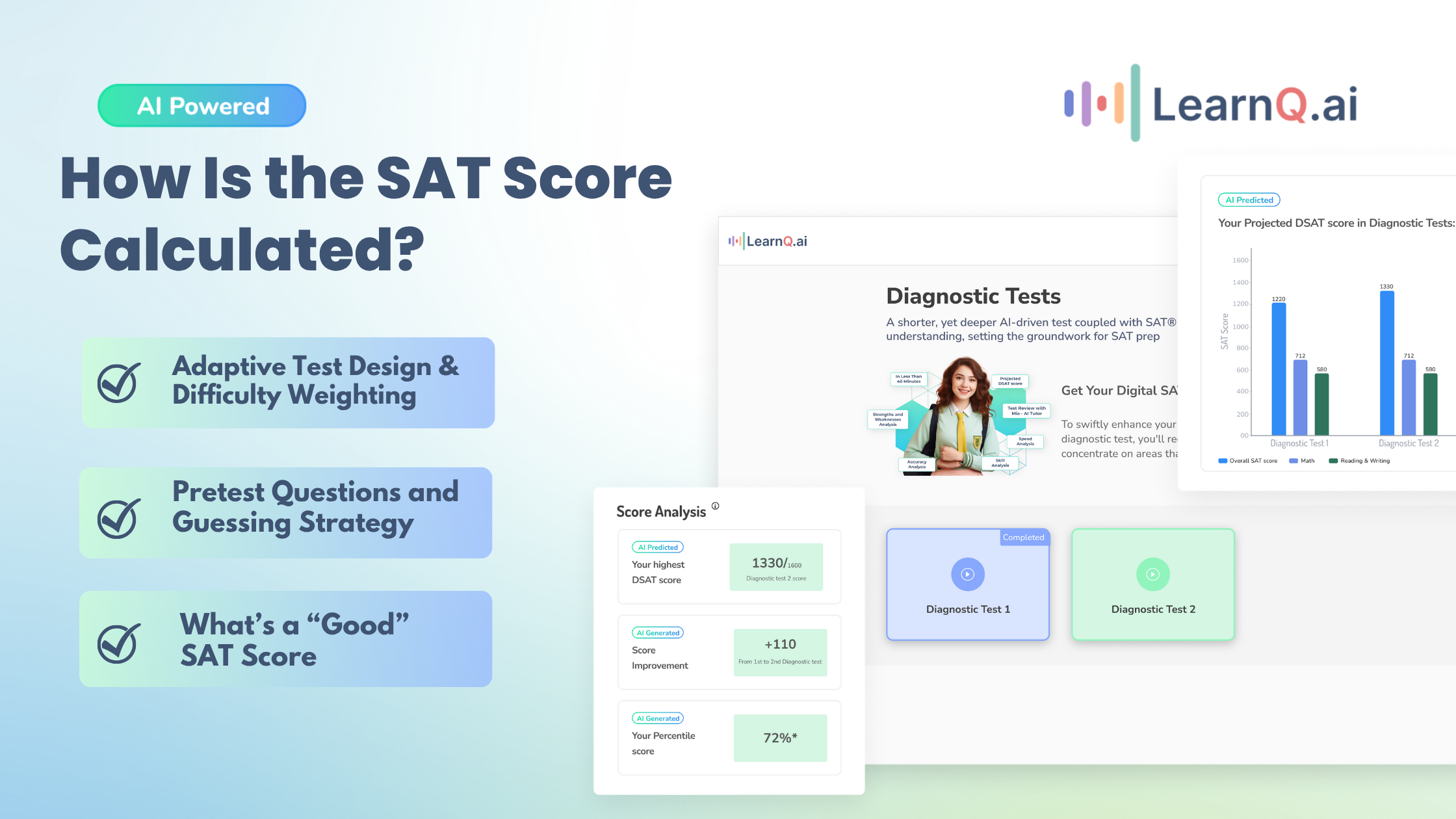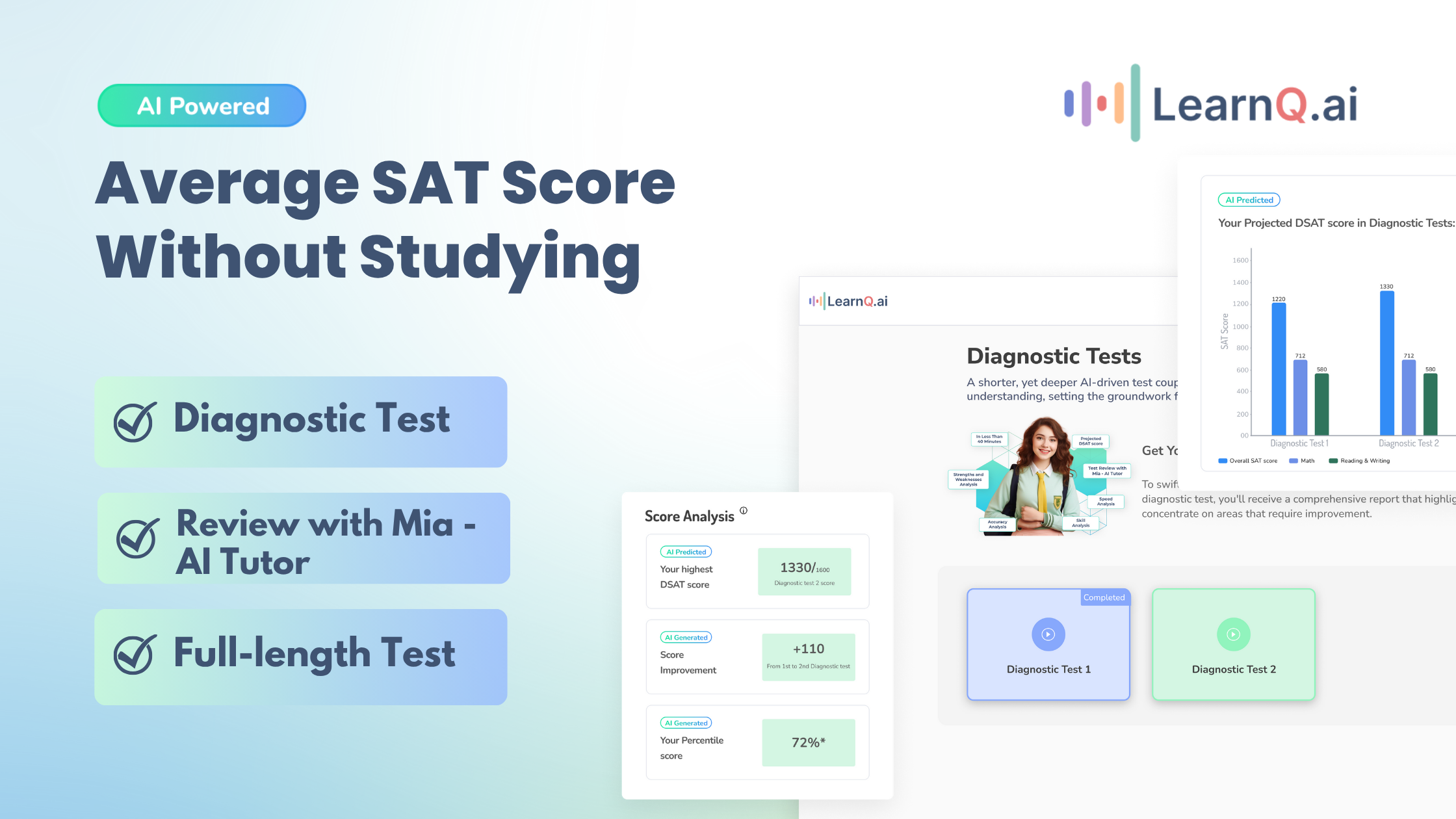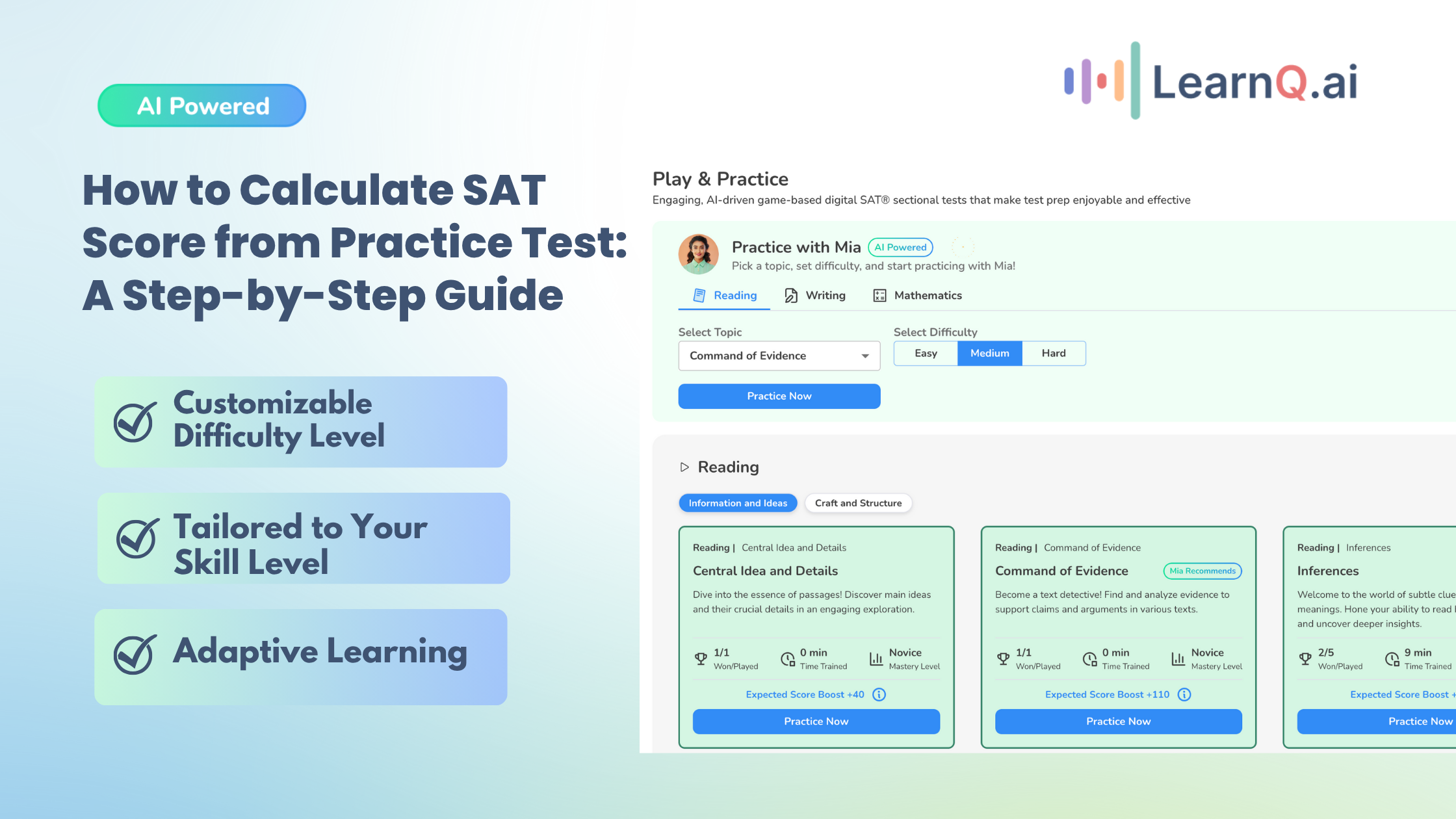In education, it’s easy to get caught up in terminology, especially when words like assessment and evaluation are often thrown around interchangeably. But here’s the thing: they are not the same, and understanding their differences can change how you approach learning or teaching.
For educators, knowing when to assess and when to evaluate can mean the difference between a student struggling and a student succeeding. For students, understanding these two concepts can help you focus on what really matters—whether it’s improving your skills or meeting the final goal.
LearnQ.ai is Powered by VEGA AI—Is your Institute Next?
Give students a Duolingo-style test-prep platform with Shopify-level customization for tutors and institutes.
Both terms play vital roles in shaping education, but they serve different purposes and happen at various stages.
In this article, we’ll explain what each term means and why evaluating assessment in education is crucial for both students and teachers.
Whether you’re an educator looking to refine your teaching methods or a student aiming to understand how you’re being measured, this is your guide to making sense of it all.
Defining Assessment and Evaluation
Let’s start with what assessment and evaluation actually mean. These aren’t just buzzwords. They serve distinct purposes in education, and understanding them is critical for both teachers and students.
1. What is Assessment?
Assessment is all about figuring out where a student stands in their learning journey. It’s not a one-time thing, either. Think of it as a regular check-in to see how well your students grasp the material. When it comes to evaluating assessments, you can use quizzes, assignments, and class participation to get a sense of what’s working and what’s not.
There are two main types of assessments:
- Formative assessments: These happen during the learning process. Whether it’s a quick quiz or group discussion, the goal is to provide feedback that helps your students improve before the final grade comes in.
- Summative assessments: This type takes place at the end of a course or module. Final exams or standardized tests fall into this category, measuring what your students have learned overall.
In short, the assessment is ongoing. It’s less about passing or failing and more about spotting gaps and adjusting the teaching to help students succeed.
Enhance your Digital SAT study routine with AI-driven insights and personalized practice tests.
2. What is Evaluation?
Now, evaluation is a bit different. While assessment is about monitoring student progress, evaluation is more about making a judgment based on the results of those assessments. While evaluating assessment focuses on student progress, evaluation looks at the broader effectiveness of the teaching or the program itself.
There are different types of evaluations, like:
- Program evaluation: This assesses the effectiveness of entire educational programs. Are students meeting learning objectives? Is the curriculum doing its job?
- Student evaluation: This examines individual student performance over time, often using assessment data to decide the next steps.
While assessments happen throughout a course, evaluations usually come at the end of a program or instructional period. It’s like stepping back and taking a broader view of whether everything’s working as planned.
Critical Differences Between Assessment and Evaluation
The key lies in evaluating assessment continuously during the learning process, while evaluation typically happens at the end. While both are essential in education, their roles, timing, and outcomes serve different purposes. It’s easy to confuse the two, but knowing these differences can help you see why both are needed.
Here is a table with the key differences.
| Aspect | Assessment | Evaluation |
| Purpose | Focuses on improving learning and providing feedback | Focuses on judging the overall effectiveness of a program or course |
| Focus | Student-centered; tracks individual progress | Program-centered: looks at the big picture of success or failure |
| Process | Continuous and dynamic; happens throughout the learning process | Static occurs at the end of a course or program to measure outcomes |
| Timing | Ongoing, with regular feedback | Periodic, usually conducted after the completion of a program |
| Outcomes | Helps inform and adjust teaching strategies | Informs decisions on program changes, policy adjustments, and funding |
| Impact | Directly affects student learning and teaching approaches | It affects institutional policies, curricula, and educational strategies |
Also Read: Know Everything About Digital SAT and PSAT/NMSQT Assessments
The Role of Data in Assessment and Evaluation
Data is at the heart of both assessment and evaluation, but how its uses differ in each context. For assessments, the focus is on real-time feedback that helps students and teachers adjust their approach. For evaluations, data informs long-term decisions that shape educational programs and policies.
1. Data Utilization in Assessment
Data plays a critical role when it comes to evaluating assessment results and adjusting instruction based on students’ needs. Each quiz, homework assignment, or group activity produces valuable insights into a student’s learning journey. Based on this data, you can adjust lesson plans, re-teach concepts, or offer extra help.
For students, the data from assessments highlights strengths and weaknesses. It’s more than just a grade—it’s feedback on how they are progressing. With tools like Vega AI, personalized learning plans based on assessment data become more dynamic.
You get actionable insights on which areas your students need to focus on next. For example, if they are struggling with algebra, Vega AI can provide tailored exercises to strengthen their understanding.
Other options for using assessment data include:
- Targeted interventions: If data shows that a group of students is struggling with a concept, teachers can arrange focused sessions to address those gaps.
- Differentiated instruction: Teachers can use data to customize learning activities to meet the needs of individual students, making learning more effective for everyone.
2. Data Utilization in Evaluation
Data used for evaluating assessment informs not only daily instruction but also broader institutional decisions. Data from multiple assessments, surveys, and other sources is combined to get a clear picture of a program’s effectiveness. This data helps educators decide whether changes need to be made, whether it’s adjusting the curriculum or rethinking teaching methods.
For institutions, evaluation data can shape big decisions:
- Curriculum adjustments: If evaluations show that a particular program isn’t delivering results, schools might consider updating or replacing it.
- Resource allocation: Evaluation data can guide schools in allocating funds, whether for hiring more teachers, investing in technology, or offering additional student support.
- Policy changes: Data from evaluations often inform broader institutional or government policy changes, impacting how education is delivered.
For educators using platforms like Vega AI, evaluation data is accessible in real-time, allowing for quicker decisions that improve teaching and learning. The insights gathered can help teachers and administrators make informed decisions about long-term strategies for student success.
Other options for using evaluation data include:
- Professional development: If evaluation data suggests that teachers need additional training, schools can design professional development programs to address those needs.
- Parental engagement: Sharing evaluation data with parents can increase engagement as they better understand how the school or program benefits their child.
Want to boost your SAT score and reach your full potential? Vega AI provides personalized study plans, real-time feedback from Mia, the AI tutor, and engaging practice tests to guide you every step of the way. Pair these tools with CollegeBoard’s resources to sharpen your performance and reduce the chances of needing retakes.
Also Read: Comparing Difficulty: Real SAT vs Practice Tests.
Enhance your Digital SAT study routine with AI-driven insights and personalized practice tests.
Practical Applications in Education
The real power of assessment and evaluation comes when they are applied effectively in education. It’s one thing to understand the theory behind these concepts, but it’s another to see them in action. Let’s look at how you can use both to improve teaching and learning in practical, everyday ways.
1. Using Assessment to Inform Instruction
Assessments aren’t just for handing out grades—they’re a tool for shaping how you teach. When you gather data from quizzes or assignments, evaluating assessments helps guide how you can adjust your teaching in real-time.
If a student struggles with a particular topic, you don’t wait until the final exam to find out. You can address it right away. This flexibility helps you respond to individual needs, making learning more personalized.
For students, assessments offer immediate feedback. You can see exactly what areas need more focus, and you know what’s working. With tools like Vega AI, this process becomes even more accessible.
Vega AI’s real-time data helps you track progress, adjust lesson plans, and tailor learning activities for each student. It’s an intelligent way to ensure that everyone is on the right track.
Other practical ways to use assessments include:
- Peer assessments: Allowing students to review each other’s work can provide new perspectives and encourage collaborative learning.
- Self-assessment: Giving students the opportunity to assess their work helps them reflect on their learning process and identify areas for improvement.
2. Evaluation in Educational Programs
While assessments focus on day-to-day learning, evaluations are about the bigger picture. They help you figure out whether an entire program or course is meeting its goals.
Evaluations are like the program’s report card. If the data shows that students aren’t achieving the desired outcomes, it might be time to rethink the curriculum or teaching methods.
Evaluation data can inform decisions for schools and educators about everything from adjusting course materials to planning future programs. With Vega AI’s insights, you can conduct evaluations more effectively, gathering data on everything from student performance to the overall impact of your educational strategies.
This data-driven approach allows for continuous improvement, ensuring that your programs evolve and stay relevant.
Practical applications for evaluations include:
- Curriculum redesign: If an evaluation shows that specific courses aren’t achieving their objectives, it may lead to a curriculum overhaul.
- Feedback loops: Evaluation data can create a continuous feedback loop, where programs are constantly refined based on performance data.
- Institutional planning: Evaluations help schools plan for the future, whether that means hiring more teachers, investing in new technologies, or expanding successful programs.
Also Read: Top Test-Taking Digital SAT Tips
LearnQ.ai is powered by VEGA AI—Is your institute next?
Offer students a Duolingo-style test-prep platform with Shopify-level customization for tutors and institutes.






Conclusion
Understanding the difference between assessment and evaluation isn’t just about using the right terms—it’s about applying them in ways that improve both teaching and learning. Assessment helps you get a clear view of where students are in their learning journey, giving you the information you need to make real-time adjustments.
Evaluation, on the other hand, takes a step back to look at the bigger picture, helping you measure the effectiveness of programs and teaching methods over time.
Both assessment and evaluation play critical roles in education. Evaluating assessment helps ensure students receive the support they need as they learn. When done right, evaluating assessment can significantly impact the way educators approach teaching and how institutions plan for future improvements.
Looking to sharpen your approach to assessments and drive meaningful student progress? Vega AI has you covered with personalized assessment tools and real-time data insights. Whether you’re refining your strategies or seeking ways to support student learning better, Vega AI provides the resources you need to focus on what truly counts and create lasting success in your classroom.

